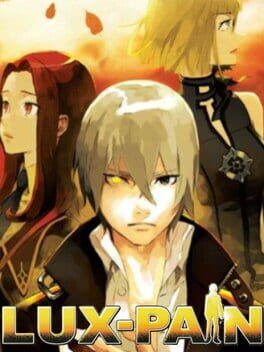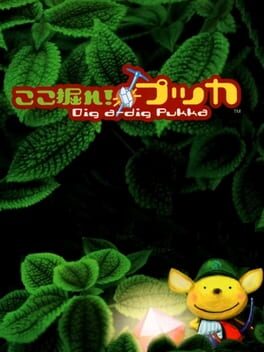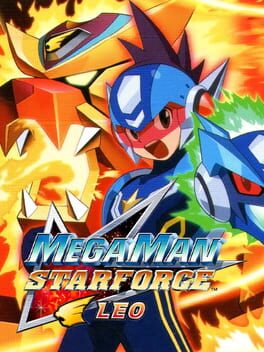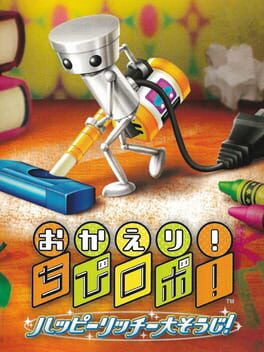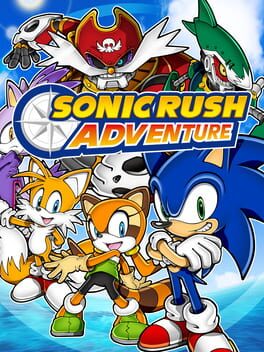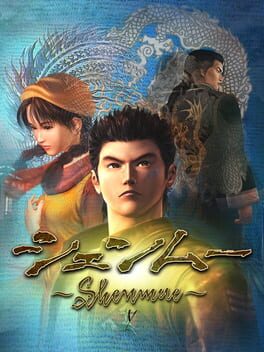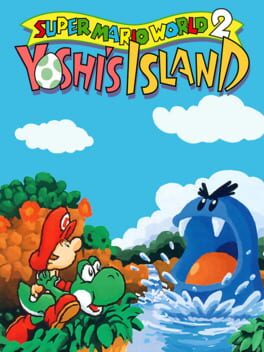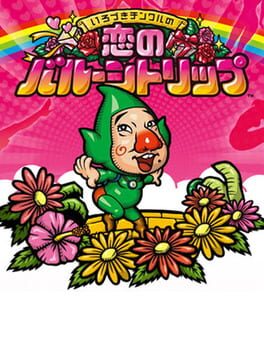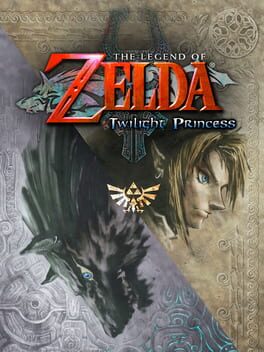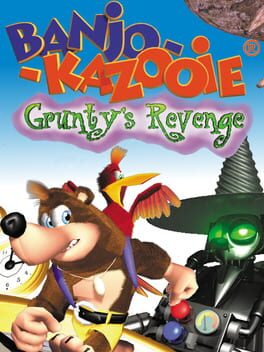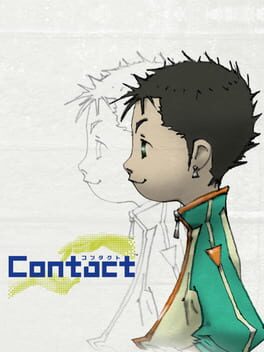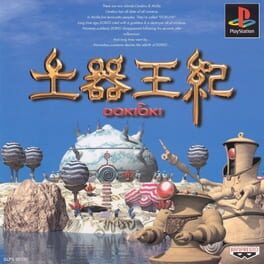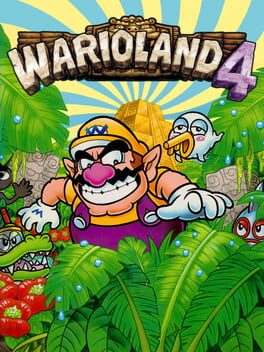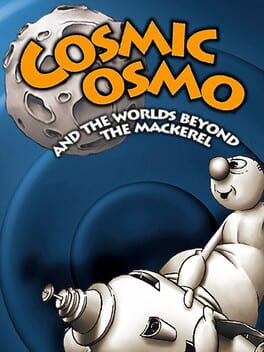DizzySkullKid19
2008
I literally just finished this one, so I'm reviewing it now while my thoughts are still hot out the oven, as it were.
This game is a weird one. It's a visual novel with a few unusual gameplay elements to mix things up. Like many visual novels, it has the different endings, the affection meter, and it has different pathways. Overall, Lux Pain is an intriguing, yet very repetitive visual novel/adventure game that won't be everyone's cup of tea, but is worth giving a shot despite negative reviews if you want an intriguing psychological mystery with plenty of friendship building.
(SYNOPSIS: SLIGHT SPOILERS AHEAD)
The main gameplay element of this game is the ability to read minds that the main character, Saijo, has. Instead of gathering physical clues from the places you visit, you are directly diving into peoples minds to try to piece things together. This ability is called "Sigma" and he uses it to extract (almost exorcise) peoples "Shinen", basically little thought worms of negative emotions, that are spread via these monsters called "Silent". Did I lose you yet? Well, be prepared to be equally confused playing this, because it does have a confusing as hell plot, that kind of teases you with its resolution until the end. Well that's the main setup, the game is about this town called Kisaragi, it's strange history, and it's problems. This game gets DARK sometimes, be prepared to lose a few characters, but despite it's darkness, it retains an optimistic and cheerful tone throughout, because of the friendships you build with your classmates and the people of the town.
(SPOILER END)
If I had to compare it to a game, it would be the title "Time Hollow", also for the DS, where the main character also has a supernatural ability and uses it to solve the mystery of a small town, in a visual novel kind of format. Indeed, it shares a hell of a lot of similarities with that game, so if you enjoyed this, play Time Hollow, or vice versa, if you enjoyed Time Hollow you might enjoy this.
The main problem is, the gameplay part of this game got repetitive about halfway into the game. Without saying too much, I will say it doesn't mix things up as often as I would like (in the enemy design, especially). Days play out the same at times, heck some chapters practically play the same, with you going through your daily routine. It's very routine-ized in gameplay, at some point it might feel like you are playing on autopilot. I will say this: if you don't like the story, don't bother. It's carried mostly by its story and the intrigue it has, and it's not the kind of game that has exactly "fun" or riveting gameplay, it's fun in the way that a mystery novel is fun, the unexpected plot points and seeing the mystery unfold. I also felt a sort of sentimental attachment to the characters, which kept me playing. I hate to make comparisons to a game that doesn't share much gameplay wise, but tonally it reminds me of Persona 4, dark, but with ahem the power of friendship to lighten things up in the end (not to mention you are diving into the dark recesses of your friends mind like Persona 4)
TLDR: Lux-Pain is simultaneously riveting and repetitive. I would recommend it to visual novel fans who like that aspect of different pathways and affection meters. I would also urge fans of "Time Hollow" to try this one out. You might be surprised by it.
This game is a weird one. It's a visual novel with a few unusual gameplay elements to mix things up. Like many visual novels, it has the different endings, the affection meter, and it has different pathways. Overall, Lux Pain is an intriguing, yet very repetitive visual novel/adventure game that won't be everyone's cup of tea, but is worth giving a shot despite negative reviews if you want an intriguing psychological mystery with plenty of friendship building.
(SYNOPSIS: SLIGHT SPOILERS AHEAD)
The main gameplay element of this game is the ability to read minds that the main character, Saijo, has. Instead of gathering physical clues from the places you visit, you are directly diving into peoples minds to try to piece things together. This ability is called "Sigma" and he uses it to extract (almost exorcise) peoples "Shinen", basically little thought worms of negative emotions, that are spread via these monsters called "Silent". Did I lose you yet? Well, be prepared to be equally confused playing this, because it does have a confusing as hell plot, that kind of teases you with its resolution until the end. Well that's the main setup, the game is about this town called Kisaragi, it's strange history, and it's problems. This game gets DARK sometimes, be prepared to lose a few characters, but despite it's darkness, it retains an optimistic and cheerful tone throughout, because of the friendships you build with your classmates and the people of the town.
(SPOILER END)
If I had to compare it to a game, it would be the title "Time Hollow", also for the DS, where the main character also has a supernatural ability and uses it to solve the mystery of a small town, in a visual novel kind of format. Indeed, it shares a hell of a lot of similarities with that game, so if you enjoyed this, play Time Hollow, or vice versa, if you enjoyed Time Hollow you might enjoy this.
The main problem is, the gameplay part of this game got repetitive about halfway into the game. Without saying too much, I will say it doesn't mix things up as often as I would like (in the enemy design, especially). Days play out the same at times, heck some chapters practically play the same, with you going through your daily routine. It's very routine-ized in gameplay, at some point it might feel like you are playing on autopilot. I will say this: if you don't like the story, don't bother. It's carried mostly by its story and the intrigue it has, and it's not the kind of game that has exactly "fun" or riveting gameplay, it's fun in the way that a mystery novel is fun, the unexpected plot points and seeing the mystery unfold. I also felt a sort of sentimental attachment to the characters, which kept me playing. I hate to make comparisons to a game that doesn't share much gameplay wise, but tonally it reminds me of Persona 4, dark, but with ahem the power of friendship to lighten things up in the end (not to mention you are diving into the dark recesses of your friends mind like Persona 4)
TLDR: Lux-Pain is simultaneously riveting and repetitive. I would recommend it to visual novel fans who like that aspect of different pathways and affection meters. I would also urge fans of "Time Hollow" to try this one out. You might be surprised by it.
This is a game I was actually able to complete, despite not knowing Japanese. However, I couldn't have done it without the help of a full playthrough on Youtube by someone named "ゲーム道場恐山", as well as this site: http://gamepukka.com/g001_dig-pukka.html.
Overall, it's a strange kind of game, in that I wouldn't necessarily recommend people go out of their way to play it, even though I personally enjoyed it.
You play as a shrew-like creature, named Pucca, who is sent by some agency to mine minerals across these different planets (despite translating from my translator to stars, you can walk on them). Each of these planets has a different theme, and each one has its own gimmicks. The goal of each planet is to get the "cosmic stone", the gem hidden in the innermost cavern of the planet.
Like the 2 "Pet in TV" games, which this game serves as kind of a sequel too (source: http://www.psxdatacenter.com/games/J/D/SCPS-10133.html under "manufacturer's description") an important gameplay gimmick of this game is that Pucca doesn't know what kind of objects he comes across. In other words, he can be a total idiot. Many times throughout the course of the game, Pucca thought a rock was food, and a piece of literal poop treasure. What you have to do in this game is this: everytime you DIRECT him to an object (if he goes up to it on his own, he will just assume its whatever he thinks it is), he will ask a question asking if it is what he thinks it is, to which you must answer accordingly. If you say no, you have to clarify what it is, if its treasure, trash, a cave, food, something pushable, etc. Basically, if it has a little glowing halo around it, it's worth something, if that doesn't show up, it's trash. It took me a while to learn this part of the game.
Although I haven't played many pet simulators, I assume this game deserves that label. In this game, Pucca will wander around, generally doing whatever the heck he wants, unless you direct him. This can make the game a frustrating but funny experience, for example whenever he sees a kiwi bird and thinks its a cave. The fun of the gameplay comes from directing Pucca towards the right outcome. To demonstrate his learning, he can take tests, but not tests where you choose the answer. Rather, Pucca answers for you based on what he learned on the field. I still have no idea, after finishing the game, what the tests even unlock, by the way.
Another fun part of the game is customization. The main ship in the game, I think it's called "the bug", you can customize, with different "themes", there's even a horror theme. Also, if you ever get sick of the basic music playing, which trust me, you will, you can change the BGM. The tracks can get pretty... experimental. They are pretty fun to listen to.
Gripes:
My main gripe with this game is how oblique it can be for non-Japanese speakers, or even Japanese speakers. You have to activate these events, which aren't always obvious, in order to reach the next areas. Also, if you are going to play this game, DO NOT, I repeat, DO NOT buy the backpack with a rainbow on the back, it has a hole in it so all the treasure you collected will fall out. You may end up going into debt and getting the bad ending, and it's terrifying.
Another problem with this game is the daily time limit. Pukka has to be back by evening, or when he levels up, night. It can get annoying, and makes gameplay a tedious thing. Often, I was in the middle of digging into the ground, only for time to run out, and sometimes the parts I dug would not respawn.
However, these gripes don't break the game. Still, this game takes a lot of patience. If you fall under it's eclectic charm though, it's worth playing if even for a little bit.
Overall, it's a strange kind of game, in that I wouldn't necessarily recommend people go out of their way to play it, even though I personally enjoyed it.
You play as a shrew-like creature, named Pucca, who is sent by some agency to mine minerals across these different planets (despite translating from my translator to stars, you can walk on them). Each of these planets has a different theme, and each one has its own gimmicks. The goal of each planet is to get the "cosmic stone", the gem hidden in the innermost cavern of the planet.
Like the 2 "Pet in TV" games, which this game serves as kind of a sequel too (source: http://www.psxdatacenter.com/games/J/D/SCPS-10133.html under "manufacturer's description") an important gameplay gimmick of this game is that Pucca doesn't know what kind of objects he comes across. In other words, he can be a total idiot. Many times throughout the course of the game, Pucca thought a rock was food, and a piece of literal poop treasure. What you have to do in this game is this: everytime you DIRECT him to an object (if he goes up to it on his own, he will just assume its whatever he thinks it is), he will ask a question asking if it is what he thinks it is, to which you must answer accordingly. If you say no, you have to clarify what it is, if its treasure, trash, a cave, food, something pushable, etc. Basically, if it has a little glowing halo around it, it's worth something, if that doesn't show up, it's trash. It took me a while to learn this part of the game.
Although I haven't played many pet simulators, I assume this game deserves that label. In this game, Pucca will wander around, generally doing whatever the heck he wants, unless you direct him. This can make the game a frustrating but funny experience, for example whenever he sees a kiwi bird and thinks its a cave. The fun of the gameplay comes from directing Pucca towards the right outcome. To demonstrate his learning, he can take tests, but not tests where you choose the answer. Rather, Pucca answers for you based on what he learned on the field. I still have no idea, after finishing the game, what the tests even unlock, by the way.
Another fun part of the game is customization. The main ship in the game, I think it's called "the bug", you can customize, with different "themes", there's even a horror theme. Also, if you ever get sick of the basic music playing, which trust me, you will, you can change the BGM. The tracks can get pretty... experimental. They are pretty fun to listen to.
Gripes:
My main gripe with this game is how oblique it can be for non-Japanese speakers, or even Japanese speakers. You have to activate these events, which aren't always obvious, in order to reach the next areas. Also, if you are going to play this game, DO NOT, I repeat, DO NOT buy the backpack with a rainbow on the back, it has a hole in it so all the treasure you collected will fall out. You may end up going into debt and getting the bad ending, and it's terrifying.
Another problem with this game is the daily time limit. Pukka has to be back by evening, or when he levels up, night. It can get annoying, and makes gameplay a tedious thing. Often, I was in the middle of digging into the ground, only for time to run out, and sometimes the parts I dug would not respawn.
However, these gripes don't break the game. Still, this game takes a lot of patience. If you fall under it's eclectic charm though, it's worth playing if even for a little bit.
Just finishing this one as well. It's my first game in this series (haven't even beaten any of the battle network games) but WOW, did this pack a punch.
At one point I was laughing at how corny the storyline could be, and at others I was downright crying (no shame). Without spoiling anything, it tells a powerful story of loneliness.
It was a little easy, which I don't mind. The encounter rate was a little too high for my taste, but from what I've played that just seems like a Battle Network/Star Force staple. One last nitpick: the save system. It was probably my fault, but sometimes I would get game overs, after not saving for a while, so I would lose a lot of progress. Make sure, if you play this, to save as often as you can.
Other than these minor nitpicks, this was a genuinely fun and engrossing experience, one that surprisingly affected me. I will definitely try the rest of the games in this series, as well as Battle Network.
(My save file reads 14 hours and 37 minutes, not accounting for time lost from game overs.)
At one point I was laughing at how corny the storyline could be, and at others I was downright crying (no shame). Without spoiling anything, it tells a powerful story of loneliness.
It was a little easy, which I don't mind. The encounter rate was a little too high for my taste, but from what I've played that just seems like a Battle Network/Star Force staple. One last nitpick: the save system. It was probably my fault, but sometimes I would get game overs, after not saving for a while, so I would lose a lot of progress. Make sure, if you play this, to save as often as you can.
Other than these minor nitpicks, this was a genuinely fun and engrossing experience, one that surprisingly affected me. I will definitely try the rest of the games in this series, as well as Battle Network.
(My save file reads 14 hours and 37 minutes, not accounting for time lost from game overs.)
Here's one I completed last year, but still lingers in my mind and asks me to replay it (which I will).
Extremely charming, silly, and emotionally affecting game about helping an impoverished family with more than just cleaning.
It's hard to believe it's on the DS. Graphically, along with Park Patrol (which I'm in the middle of playing), it is a technical marvel, with Chibi running around in full 3D environments, which are surprisingly expansive.
If you liked the original, I beg you to play this. Heck, I think this game is worth anyone's time.
(My save file, last I checked, was around 15 hours and 20 minutes)
Extremely charming, silly, and emotionally affecting game about helping an impoverished family with more than just cleaning.
It's hard to believe it's on the DS. Graphically, along with Park Patrol (which I'm in the middle of playing), it is a technical marvel, with Chibi running around in full 3D environments, which are surprisingly expansive.
If you liked the original, I beg you to play this. Heck, I think this game is worth anyone's time.
(My save file, last I checked, was around 15 hours and 20 minutes)
2007
When I was a kid I had Sonic Rush, while my sister had Sonic Rush Adventure. We would trade between the games, so I would get little snippets of this one. I never played through it until now, however.
It's fast, hyperactive sonic fun, with clever level design. The boost mechanic carries over from the first game, and it works REALLY well. Like all sonic games, you get a sense of invincibility when you are going fast, until (sometimes weird) enemy placement forces you to pump the brakes. Hardly the best platformer on the DS, but you shouldn't overlook it either if you dig the Sonic formula.
Main complaints is that the story doesn't explain itself too well, but I wasn't exactly in it for the story, so that's alright. The music is another complaint. I might be asking too much for it to compare to the first Sonic Rush game, but I found it a little underwhelming. The tunes are catchy, don't get me wrong, but they feel like a pale imitation of Hideki Naganuma's work on the original.
It's fast, hyperactive sonic fun, with clever level design. The boost mechanic carries over from the first game, and it works REALLY well. Like all sonic games, you get a sense of invincibility when you are going fast, until (sometimes weird) enemy placement forces you to pump the brakes. Hardly the best platformer on the DS, but you shouldn't overlook it either if you dig the Sonic formula.
Main complaints is that the story doesn't explain itself too well, but I wasn't exactly in it for the story, so that's alright. The music is another complaint. I might be asking too much for it to compare to the first Sonic Rush game, but I found it a little underwhelming. The tunes are catchy, don't get me wrong, but they feel like a pale imitation of Hideki Naganuma's work on the original.
1999
Shenmue wore its ambition on its sleeve. It's a massive game, not just in terms of overworld (which is expansive for it's time), but in terms of budget and sheer amount of people involved. As I was watching the credits, I was struck by how long they were, and it has to be the first game that I know of that hired stunt actors. What makes Shenmue interesting and revolutionary to this day are not only the graphics, but how it attempts to make a "cinematic game", mixing action-movie segments with more mundane life simulation.
I find you come across an interesting conundrum when you try to make a "cinematic game". Cinema is based on 'cuts', that is, they aren't necessarily showing the full routine of the main character, generally only the scenes it finds relevant to its plot. Shenmue on the other hand, includes all of it. If it's an action movie, it's one of the most "realistic action movies" I know of.
This is both what makes Shenmue so compelling for some (like me) and outdated/boring for others. It's a game where you simultaneously have to chase after a Chinese cartel while still making sure you're home by ten. Where you are getting a forklift job at one instance, and then beating up at least a few bad guys at the next. And make no mistake, this game starts slow. You basically start with no clues on the whereabouts of the man who just killed your father. So, perhaps expectedly, a lot of the game is just asking people questions, and waiting. You can pass the time by... playing arcade games, and uhhh what else, maybe looking at stuff? I can see why some might abandon this game early, but I found the contradiction between the everyday routine parts of this game, and the high octane moments, to really make it an interesting gameplay experience. During the everyday-segments, I felt like I was living in a pre-internet Japan, more than anything (where these were probably realistic activities). I was actually thrilled by the routine of Ryo Hakuzi, and seeing where he was led next.
However, I understand this isn't a game that everyone, or maybe even most people, will find thrilling. It's worth admiring though, even if from a distance, for it's ambition and charm.
I find you come across an interesting conundrum when you try to make a "cinematic game". Cinema is based on 'cuts', that is, they aren't necessarily showing the full routine of the main character, generally only the scenes it finds relevant to its plot. Shenmue on the other hand, includes all of it. If it's an action movie, it's one of the most "realistic action movies" I know of.
This is both what makes Shenmue so compelling for some (like me) and outdated/boring for others. It's a game where you simultaneously have to chase after a Chinese cartel while still making sure you're home by ten. Where you are getting a forklift job at one instance, and then beating up at least a few bad guys at the next. And make no mistake, this game starts slow. You basically start with no clues on the whereabouts of the man who just killed your father. So, perhaps expectedly, a lot of the game is just asking people questions, and waiting. You can pass the time by... playing arcade games, and uhhh what else, maybe looking at stuff? I can see why some might abandon this game early, but I found the contradiction between the everyday routine parts of this game, and the high octane moments, to really make it an interesting gameplay experience. During the everyday-segments, I felt like I was living in a pre-internet Japan, more than anything (where these were probably realistic activities). I was actually thrilled by the routine of Ryo Hakuzi, and seeing where he was led next.
However, I understand this isn't a game that everyone, or maybe even most people, will find thrilling. It's worth admiring though, even if from a distance, for it's ambition and charm.
Completed on GBA.
I am always appreciative towards experimental games. It may seem odd, these days, to consider Yoshi's Island an experimental game. By experimental, I do not mean the most original, odd or avant-garde thing, that completely changes our definition of a video game. Rather, a game that's willing to stray a little from it's predecessors and influences, and create something that's just enough new to be interesting.
Yoshi's Island ticks the "original" criteria, in both aesthetics and gameplay. With it's pastel, crayon-drawn aesthetic, and it's novel concepts of Yoshi's health bar/indicator being his protection of baby Mario. Even though it's not exactly reinventing the wheel, it was enough to create a whole new IP: the Yoshi's Island series or the Yoshi series of platformers more generally. I find it very cool that it started off as the sequel to Super Mario World, and became it's own series.
It's not discovering a new planet, but rather discovering a new country. It doesn't throw away the map entirely, it's just using it to discover new things. That's what Yoshi's Island is.
It's experimental nature is both it's curse and it's charm. It seems like a "throw things at the wall and see what sticks" kind of scenario, where Nintendo was just trying stuff. I appreciate that, but it doesn't all work out as intended.
To start with the pros: the music, art, and most of the levels/mechanics are charming and original. The map screen theme is one of my favorite video game tunes ever, and one of the most iconic. The whole aesthetic just feels like a warm, comfy blanket that you tuck into during a snowy, winter day.
Cons; The music and artstyle, while great, does tend to wear thin later on, with a lot of the backgrounds and music being recycled. This shouldn't necessarily be a bad thing, because most of the Super Mario Bros. games do the same, having the same music for caves, underground areas, etcetera. However, I think in this game, it wouldn't hurt to have original music for each area, with how much the aesthetics play a role in this game, although that might not be possible within the SNES 's limits.
But my biggest problem with the game is some of the level design. The level 5-4 being the biggest example of this; it's a good contender for the worst level in the game, just because one frustrating segment. A lot of the time the mechanics of the game, which started out original, don't always work. During that level, there was a part where I needed to remove spikes by throwing my eggs at them, to get on this moving platform. I only got it about 15 lives later, because the moving platform goes pretty quick, and doesn't come back.
There is many other examples of frustrating level design in this one, be prepared to get used to the SFX of baby Mario crying.
However, I can forgive all of this, simply because I appreciate how Nintendo was willing to experiment a little on this game, and it's a charming game despite that it doesn't all work that well. It also is the first start in a series I wanna experience more of: the Yoshi platformers.
I can imagine it being the kind of game where I would play it alongside a sibling, if I grew up with this game. It gets a little tiring playing it in long sessions, back-to-back, so I think it works perfect as a collaborative game.
I am always appreciative towards experimental games. It may seem odd, these days, to consider Yoshi's Island an experimental game. By experimental, I do not mean the most original, odd or avant-garde thing, that completely changes our definition of a video game. Rather, a game that's willing to stray a little from it's predecessors and influences, and create something that's just enough new to be interesting.
Yoshi's Island ticks the "original" criteria, in both aesthetics and gameplay. With it's pastel, crayon-drawn aesthetic, and it's novel concepts of Yoshi's health bar/indicator being his protection of baby Mario. Even though it's not exactly reinventing the wheel, it was enough to create a whole new IP: the Yoshi's Island series or the Yoshi series of platformers more generally. I find it very cool that it started off as the sequel to Super Mario World, and became it's own series.
It's not discovering a new planet, but rather discovering a new country. It doesn't throw away the map entirely, it's just using it to discover new things. That's what Yoshi's Island is.
It's experimental nature is both it's curse and it's charm. It seems like a "throw things at the wall and see what sticks" kind of scenario, where Nintendo was just trying stuff. I appreciate that, but it doesn't all work out as intended.
To start with the pros: the music, art, and most of the levels/mechanics are charming and original. The map screen theme is one of my favorite video game tunes ever, and one of the most iconic. The whole aesthetic just feels like a warm, comfy blanket that you tuck into during a snowy, winter day.
Cons; The music and artstyle, while great, does tend to wear thin later on, with a lot of the backgrounds and music being recycled. This shouldn't necessarily be a bad thing, because most of the Super Mario Bros. games do the same, having the same music for caves, underground areas, etcetera. However, I think in this game, it wouldn't hurt to have original music for each area, with how much the aesthetics play a role in this game, although that might not be possible within the SNES 's limits.
But my biggest problem with the game is some of the level design. The level 5-4 being the biggest example of this; it's a good contender for the worst level in the game, just because one frustrating segment. A lot of the time the mechanics of the game, which started out original, don't always work. During that level, there was a part where I needed to remove spikes by throwing my eggs at them, to get on this moving platform. I only got it about 15 lives later, because the moving platform goes pretty quick, and doesn't come back.
There is many other examples of frustrating level design in this one, be prepared to get used to the SFX of baby Mario crying.
However, I can forgive all of this, simply because I appreciate how Nintendo was willing to experiment a little on this game, and it's a charming game despite that it doesn't all work that well. It also is the first start in a series I wanna experience more of: the Yoshi platformers.
I can imagine it being the kind of game where I would play it alongside a sibling, if I grew up with this game. It gets a little tiring playing it in long sessions, back-to-back, so I think it works perfect as a collaborative game.
Surprisingly amazing.
If you told me I would love a game about Tingle from the Legend of Zelda, who has to win the affection of girls across the land by showering them with presents, in a story lightly-based on the Wizard of Oz, I would probably laugh.
Seriously, this is a really good adventure game (by adventure I mean the point-and-click variety), that's probably one of my favorite DS imports.
The original Tingle game, Rosy Rupeeland, is one that I also love, and that plays more like an (albeit unconventional) top down Zelda. They are two pretty different games, but I think this is the one I would take to a desert island.
It's not perfect, not by a long shot. I'm giving it 4 and a half stars simply because it really captured me. I found it more substantial than the original Tingle game, with a more coherent story (even though I love Rosy Rupeeland, don't get me wrong).
Main problems with it was that it was a difficult process finding out what presents each person liked, so I kept having to reset. Using a walkthrough that gives a chart of each persons present preferences will save you a lot of trouble (it's not cheating).
Play this one, if you can get it.
If you told me I would love a game about Tingle from the Legend of Zelda, who has to win the affection of girls across the land by showering them with presents, in a story lightly-based on the Wizard of Oz, I would probably laugh.
Seriously, this is a really good adventure game (by adventure I mean the point-and-click variety), that's probably one of my favorite DS imports.
The original Tingle game, Rosy Rupeeland, is one that I also love, and that plays more like an (albeit unconventional) top down Zelda. They are two pretty different games, but I think this is the one I would take to a desert island.
It's not perfect, not by a long shot. I'm giving it 4 and a half stars simply because it really captured me. I found it more substantial than the original Tingle game, with a more coherent story (even though I love Rosy Rupeeland, don't get me wrong).
Main problems with it was that it was a difficult process finding out what presents each person liked, so I kept having to reset. Using a walkthrough that gives a chart of each persons present preferences will save you a lot of trouble (it's not cheating).
Play this one, if you can get it.
One of my favorite Zelda games (even though I can make a case for all of them being my favorites). I don't know why, but there is something so charming about the aesthetic of the world. It gives off a kind of "rustic" feel at first, in Ordon and Kakariko, which contrasts with the kind of baroque, ornate style of a lot of later places in the game. You start by herding goats in a small ranch and then you go facing enemies in giant castles. I didn't find it too realistic as people sometimes say it is, it's still a game with plenty of that Zelda silliness and charm. For example, Link gets shot out of a cannon into the sky in order to get to one dungeon. The character designs also are only semi-realistic, they are still pretty cartoony, for example the postman.
The music is great, calming at times (Ordon Village) and intense and triumphant at others (Hyrule Field). The graphics were amazing for being originally a Gamecube game.
Even though it's an amazing game in my eyes, I still recognize it's faults, which is why it's a 4.5.
I didn't find Midna too charming, I was never one for sarcastic characters. I understand why people like her though.
The music is great, calming at times (Ordon Village) and intense and triumphant at others (Hyrule Field). The graphics were amazing for being originally a Gamecube game.
Even though it's an amazing game in my eyes, I still recognize it's faults, which is why it's a 4.5.
I didn't find Midna too charming, I was never one for sarcastic characters. I understand why people like her though.
(Everything I express in this review is simply a personal opinion. Please do not get mad at me. People still have valid reasons to enjoy this game.)
Frankly, I didn't find this game too fun. I'm sorry. Even though I CAN still say it's a good game.
Note: the first part of my review is going to be kind of negative, but I had lots of things I liked about this game, so feel free to skip ahead.
I'm putting "played" here, because I can't say in good faith I've done everything in this game. I got right up to the final boss, but died at the second round, quit, and lost an hour of progress because I forgot to save. It brings me to a feature I would like: if it would save when you select "quit". However, I watched the final boss and ending, so in my mind I've seen everything I wanted to see with this game.
It's my first experience with Banjo-Kazooie. I might be starting off on the wrong foot here. Rare's other games have impressed me ( see the Donkey Kong Country series), which I find ingenious. This one, not so much.
Many have complained about the camera angle, but I just didn't find the core gameplay loop fun at all: collection felt mindless rather than rewarding. It was tiresome to backtrack to certain areas to get these puzzle pieces ("Jiggy's"), mostly because I didn't find the areas notable. Aesthetically, they were the artistic equivalent of Home Depot.
It suffered some from, I think, a lack of meaningful places and NPC's. I'm not asking for this game to be some kind of world building RPG, simply that it makes the areas fun to revisit. There are secrets in each place, sure, but a lot of them are monotonous, like (literally) grey sewage pipes. My favorite was this sand castle in the harbor area, which I found charming because it was made up of these small things that distinguished it from the previous area, the little background details: sea stars, candy wrappers and such, really helped break up the monotony a little, even added some character. The pre-rendered graphics I also found really worked towards a pleasing whole. It was really cool seeing all the little pre-rendered buildings, like the temple. Being able to go through the chimney into a luxurious hotel room, and see the little luxurious, tiger-striped bed, TV, and lamp in all it's pre-rendered glory, on a GBA no less, was a weird kind of liminal (to be pretentious) experience. It was little things like that, the details, that really made this one charming.
Part of the monotony could be broken also, by getting to know the people you meet in the game more. For example there is an ice cream vendor in a truck, maybe in the later worlds, they could come to visit Banjo and Kazooie later on with a new ice cream store. Or maybe they are starting a shaved ice business and getting ice from Freezing Furnace (the ice themed area). These are just examples. I think seeing how the world develops would be cool, of course within system limitations and all that. Maybe even have new plotlines that happen only after you finish an area and go back to it.
I want to try the other Banjo-Kazooie's, however. Simply because of the charm of the world in this one.
It is charming, for some reason the character design and art direction reminds me a little of Wallace and Gromit, in it's kind of playful and lightly caricaturized design (and it has animals with googly eyes, reminding me of Wallace and Gromit)
TLDR: My impressions of this game is that it IS worth trying, just wasn't for me. Partially because of my expectations: I went in expecting something deep, like a real lengthy story-based game. It's not exactly like that, far from a world building action-adventure.
However what this game excels at is it's whimsical, childlike sense of humor, and it's unique attempt at putting a series of 3D platformers on the GBA. If you love collect-athon gameplay, a childlike sense of whimsy, or pre-rendered graphics, I would recommend this to you, with some reservations.
Frankly, I didn't find this game too fun. I'm sorry. Even though I CAN still say it's a good game.
Note: the first part of my review is going to be kind of negative, but I had lots of things I liked about this game, so feel free to skip ahead.
I'm putting "played" here, because I can't say in good faith I've done everything in this game. I got right up to the final boss, but died at the second round, quit, and lost an hour of progress because I forgot to save. It brings me to a feature I would like: if it would save when you select "quit". However, I watched the final boss and ending, so in my mind I've seen everything I wanted to see with this game.
It's my first experience with Banjo-Kazooie. I might be starting off on the wrong foot here. Rare's other games have impressed me ( see the Donkey Kong Country series), which I find ingenious. This one, not so much.
Many have complained about the camera angle, but I just didn't find the core gameplay loop fun at all: collection felt mindless rather than rewarding. It was tiresome to backtrack to certain areas to get these puzzle pieces ("Jiggy's"), mostly because I didn't find the areas notable. Aesthetically, they were the artistic equivalent of Home Depot.
It suffered some from, I think, a lack of meaningful places and NPC's. I'm not asking for this game to be some kind of world building RPG, simply that it makes the areas fun to revisit. There are secrets in each place, sure, but a lot of them are monotonous, like (literally) grey sewage pipes. My favorite was this sand castle in the harbor area, which I found charming because it was made up of these small things that distinguished it from the previous area, the little background details: sea stars, candy wrappers and such, really helped break up the monotony a little, even added some character. The pre-rendered graphics I also found really worked towards a pleasing whole. It was really cool seeing all the little pre-rendered buildings, like the temple. Being able to go through the chimney into a luxurious hotel room, and see the little luxurious, tiger-striped bed, TV, and lamp in all it's pre-rendered glory, on a GBA no less, was a weird kind of liminal (to be pretentious) experience. It was little things like that, the details, that really made this one charming.
Part of the monotony could be broken also, by getting to know the people you meet in the game more. For example there is an ice cream vendor in a truck, maybe in the later worlds, they could come to visit Banjo and Kazooie later on with a new ice cream store. Or maybe they are starting a shaved ice business and getting ice from Freezing Furnace (the ice themed area). These are just examples. I think seeing how the world develops would be cool, of course within system limitations and all that. Maybe even have new plotlines that happen only after you finish an area and go back to it.
I want to try the other Banjo-Kazooie's, however. Simply because of the charm of the world in this one.
It is charming, for some reason the character design and art direction reminds me a little of Wallace and Gromit, in it's kind of playful and lightly caricaturized design (and it has animals with googly eyes, reminding me of Wallace and Gromit)
TLDR: My impressions of this game is that it IS worth trying, just wasn't for me. Partially because of my expectations: I went in expecting something deep, like a real lengthy story-based game. It's not exactly like that, far from a world building action-adventure.
However what this game excels at is it's whimsical, childlike sense of humor, and it's unique attempt at putting a series of 3D platformers on the GBA. If you love collect-athon gameplay, a childlike sense of whimsy, or pre-rendered graphics, I would recommend this to you, with some reservations.
2006
1995
(Note: I'm just getting home from a long trip, so I'm writing this in the wee hours of the morning. Therefore, this isn't going to be an in depth review, and I apologize)
I think this is the perfect game to introduce people to RPG's.
For one, it's fairly easy (except for that final boss), if you get the Star B items and distribute stat points well. Even so, it's not a pushover. So it challenges just enough.
It has a surprisingly large overworld for a GBA game, but it isn't overwhelming. It's full of zaniness that bypasses and even at times parodies the RPG conventions. The story doesn't take itself extremely seriously, and you can tell from the onset. However, that's actually what makes the game stand out.
There are a large number of sidequests, and the graphics are charming, with great spritework that makes it feel like a DS game.
The battle system is really unique. Sure, it takes cues from its predecessors SMRPG and Paper Mario, but it adds its own twists. For example, in order to be able to dodge enemy attacks well, you have to read their cues. Some enemies will look left or right before attacking, some will have a red or green signal, which tells you which Bro the attack is going to.
It's a really interesting system. It adds kind of an active element to the turn-based RPG system. Instead of just waiting for your turn passively, it felt like you were really participating in the battles.
Recommending for just about anyone to try this one.
I think this is the perfect game to introduce people to RPG's.
For one, it's fairly easy (except for that final boss), if you get the Star B items and distribute stat points well. Even so, it's not a pushover. So it challenges just enough.
It has a surprisingly large overworld for a GBA game, but it isn't overwhelming. It's full of zaniness that bypasses and even at times parodies the RPG conventions. The story doesn't take itself extremely seriously, and you can tell from the onset. However, that's actually what makes the game stand out.
There are a large number of sidequests, and the graphics are charming, with great spritework that makes it feel like a DS game.
The battle system is really unique. Sure, it takes cues from its predecessors SMRPG and Paper Mario, but it adds its own twists. For example, in order to be able to dodge enemy attacks well, you have to read their cues. Some enemies will look left or right before attacking, some will have a red or green signal, which tells you which Bro the attack is going to.
It's a really interesting system. It adds kind of an active element to the turn-based RPG system. Instead of just waiting for your turn passively, it felt like you were really participating in the battles.
Recommending for just about anyone to try this one.
2001
Wario Land 4 is a really freakin' funky (in a good way) game. Everything about the style of it, the actually insane music, just gives that off.
It's an amazing experience of a game, and a great pick if you're looking for an out-of-the-box platformer for the GBA. I did have my problems with it, but I still highly recommend it.
The music, I think is one of the best soundtracks I've heard for a GBA game. Some of the tracks (Palm Tree Paradise, the credits track) even have VOCALS. I'm sure this isn't as impressive as I make it out to be, but the fact that you can actually tell what the person is singing is quite impressive. The music really fits the mood of the stages, from relaxing in nature (Wildflower Fields, Monsoon Jungle), to haunted and spooky, with a touch of funky (Crescent Moon Village, Hotel Horror), and then my favorite, the hyperactive "Hurry Up!" music that starts when the timer goes off.
I also want to mention the level design. Here, I don't just mean the way the levels are layed out, like enemy placement, but just literally how the levels are designed, artistically speaking. Every level is really just a visual treat, and the visuals actually lend to the identity and function of the levels. Mystic Lake is going to be kind of weird and mystical, with you traversing these underground water-tunnels, and dodging these weird eels. To fit the theme is also has really strange and mystical music. It makes it extremely interesting to traverse these stages, because each one is really fun just to soak in, and the people making this must have been masters at setting the stage. The music, aesthetic design, and functional design of each level worked in almost perfect tandem.
The enemies are really goofy in their design. They aren't as straightforward and too-the-point in their design like in Super Mario Bros. (even though the enemies in those games are surreal as well). You have fish wearing scuba goggles, these weird pink guys with an axe in Hotel Horror, and altogether just a bunch of really colorful enemies, most of which (as far as I can tell) are not recycled from previous games.
I nominate it for the most colorful Wario Land game (with Shake It coming in second). I still think 2 is my favorite, but this one just has so much personality. It might be unfair the call it the most colorful, because two of the entries were on the OG Gameboy, and the Virtual Boy, where there wasn't much color literally. However, I think that it's a really just bold game, the boldest out of the already experimental Wario Land games, which is what I mean by colorful. You have a timer that happens when you leave each level, Wario has a health bar, along with countless other experimentations. I can't quite phrase it, Wario Land 3 was bold for being a metroidvania rather than a normal sidescrolling platformer, Wario Land 2 for having a unique aesthetic style, Wario Land VB for being on well... the Virtual Boy, and lastly, Wario Land 1 for making a game about freaking Wario of all things, but 4 is really where the series found it's identity. The limitations (although they made the previous games charming) were really just overcome here, and Wario really realizes his full potential.
I still have some problems with the level design. I take the blame for it, but many times I had to retraverse levels in order to get an item I needed. This is game where collection isn't optional, but necesarry. It works, don't get me wrong, with the timer system. Both that you had to collect all the gem pieces and the key, and get out in time, was actually a really fun gameplay mechanic. The part that wasn't fun was either losing all progress when you ran out of time, or forgetting something and not being able to backtrack because the area was now blocked off.
Some of these complaints are actually what made the game interesting, however. It was really cool to see the pathways that were blocked off before became exit routes when you hit the timer switch. So I really do like the gameplay elements at work here, it's just kind of a personal thing ;(.
As a last complaint (talk about ending on a positive note) the movement feels kind of clunky. It's part and parcel of the Wario Land series, and Wario's character, however. You are definitely not controlling a lanky, speedy Mario. You are controlling a portly, muscly Wario. It wouldn't make sense for him to move any other way, but it does make some of the boss fights somewhat annoying. It's easily forgiveable though.
TLDR: Wario Land 4 is perfect for those looking for an out of the box platformer on the GBA. With plenty of identity, jamming tunes, and a fun and clever but once in a while frustrating gameplay system, this game is highly recommended. You might feel a bit like Wario after playing it, greedy for more.
It's an amazing experience of a game, and a great pick if you're looking for an out-of-the-box platformer for the GBA. I did have my problems with it, but I still highly recommend it.
The music, I think is one of the best soundtracks I've heard for a GBA game. Some of the tracks (Palm Tree Paradise, the credits track) even have VOCALS. I'm sure this isn't as impressive as I make it out to be, but the fact that you can actually tell what the person is singing is quite impressive. The music really fits the mood of the stages, from relaxing in nature (Wildflower Fields, Monsoon Jungle), to haunted and spooky, with a touch of funky (Crescent Moon Village, Hotel Horror), and then my favorite, the hyperactive "Hurry Up!" music that starts when the timer goes off.
I also want to mention the level design. Here, I don't just mean the way the levels are layed out, like enemy placement, but just literally how the levels are designed, artistically speaking. Every level is really just a visual treat, and the visuals actually lend to the identity and function of the levels. Mystic Lake is going to be kind of weird and mystical, with you traversing these underground water-tunnels, and dodging these weird eels. To fit the theme is also has really strange and mystical music. It makes it extremely interesting to traverse these stages, because each one is really fun just to soak in, and the people making this must have been masters at setting the stage. The music, aesthetic design, and functional design of each level worked in almost perfect tandem.
The enemies are really goofy in their design. They aren't as straightforward and too-the-point in their design like in Super Mario Bros. (even though the enemies in those games are surreal as well). You have fish wearing scuba goggles, these weird pink guys with an axe in Hotel Horror, and altogether just a bunch of really colorful enemies, most of which (as far as I can tell) are not recycled from previous games.
I nominate it for the most colorful Wario Land game (with Shake It coming in second). I still think 2 is my favorite, but this one just has so much personality. It might be unfair the call it the most colorful, because two of the entries were on the OG Gameboy, and the Virtual Boy, where there wasn't much color literally. However, I think that it's a really just bold game, the boldest out of the already experimental Wario Land games, which is what I mean by colorful. You have a timer that happens when you leave each level, Wario has a health bar, along with countless other experimentations. I can't quite phrase it, Wario Land 3 was bold for being a metroidvania rather than a normal sidescrolling platformer, Wario Land 2 for having a unique aesthetic style, Wario Land VB for being on well... the Virtual Boy, and lastly, Wario Land 1 for making a game about freaking Wario of all things, but 4 is really where the series found it's identity. The limitations (although they made the previous games charming) were really just overcome here, and Wario really realizes his full potential.
I still have some problems with the level design. I take the blame for it, but many times I had to retraverse levels in order to get an item I needed. This is game where collection isn't optional, but necesarry. It works, don't get me wrong, with the timer system. Both that you had to collect all the gem pieces and the key, and get out in time, was actually a really fun gameplay mechanic. The part that wasn't fun was either losing all progress when you ran out of time, or forgetting something and not being able to backtrack because the area was now blocked off.
Some of these complaints are actually what made the game interesting, however. It was really cool to see the pathways that were blocked off before became exit routes when you hit the timer switch. So I really do like the gameplay elements at work here, it's just kind of a personal thing ;(.
As a last complaint (talk about ending on a positive note) the movement feels kind of clunky. It's part and parcel of the Wario Land series, and Wario's character, however. You are definitely not controlling a lanky, speedy Mario. You are controlling a portly, muscly Wario. It wouldn't make sense for him to move any other way, but it does make some of the boss fights somewhat annoying. It's easily forgiveable though.
TLDR: Wario Land 4 is perfect for those looking for an out of the box platformer on the GBA. With plenty of identity, jamming tunes, and a fun and clever but once in a while frustrating gameplay system, this game is highly recommended. You might feel a bit like Wario after playing it, greedy for more.
Cosmic Osmo is a game I have marked as played, because for one I would feel weird saying I completed the game after my game time clocking in at about 2 and a half hours, and two for the fact that you can't really beat this game.
I first got curious about it after reading somewhere that the creator of Garage: Bad Dream Adventure apparently was influenced by it.
I admit, I don't know about the history of videogames to point to this being one of the first games that are more experiences rather than goals. Although I have yet to play it, I imagine the The Manhole, which was released before this game and by the same developer, might be more worthy of that mantel.
It's a game that really disorients your sense of space, something they had to have taken from Alice and Wonderland. Like Alice, Osmo is constantly growing big or small, randomly fitting through tiny spaces without explanation. A painting turns into a hallway that turns into a government office.
Everything is drawn in a simple, stylized, yet detailed way. The fact that it's in monochrome doesn't detract from the experience at all. It ignites your imagination.
TLDR: Cosmic Osmo is a bit of an oddball game. It's one of the early games without goals, more focused on exploration. It is heavy stylized and witty, reminding me of a sunday morning newspaper comic, with a touch of surrealism. It will surely entertain anyone willing to give a try to something unexpected. Being only 6 dollars, at most, on Steam (and it's currently marked down as of the 2023 Summer Sale), it won't hurt to try it. Our shapeshifting Osmo with an odd sense of humor might reignite your sense of discovery.
I first got curious about it after reading somewhere that the creator of Garage: Bad Dream Adventure apparently was influenced by it.
I admit, I don't know about the history of videogames to point to this being one of the first games that are more experiences rather than goals. Although I have yet to play it, I imagine the The Manhole, which was released before this game and by the same developer, might be more worthy of that mantel.
It's a game that really disorients your sense of space, something they had to have taken from Alice and Wonderland. Like Alice, Osmo is constantly growing big or small, randomly fitting through tiny spaces without explanation. A painting turns into a hallway that turns into a government office.
Everything is drawn in a simple, stylized, yet detailed way. The fact that it's in monochrome doesn't detract from the experience at all. It ignites your imagination.
TLDR: Cosmic Osmo is a bit of an oddball game. It's one of the early games without goals, more focused on exploration. It is heavy stylized and witty, reminding me of a sunday morning newspaper comic, with a touch of surrealism. It will surely entertain anyone willing to give a try to something unexpected. Being only 6 dollars, at most, on Steam (and it's currently marked down as of the 2023 Summer Sale), it won't hurt to try it. Our shapeshifting Osmo with an odd sense of humor might reignite your sense of discovery.
